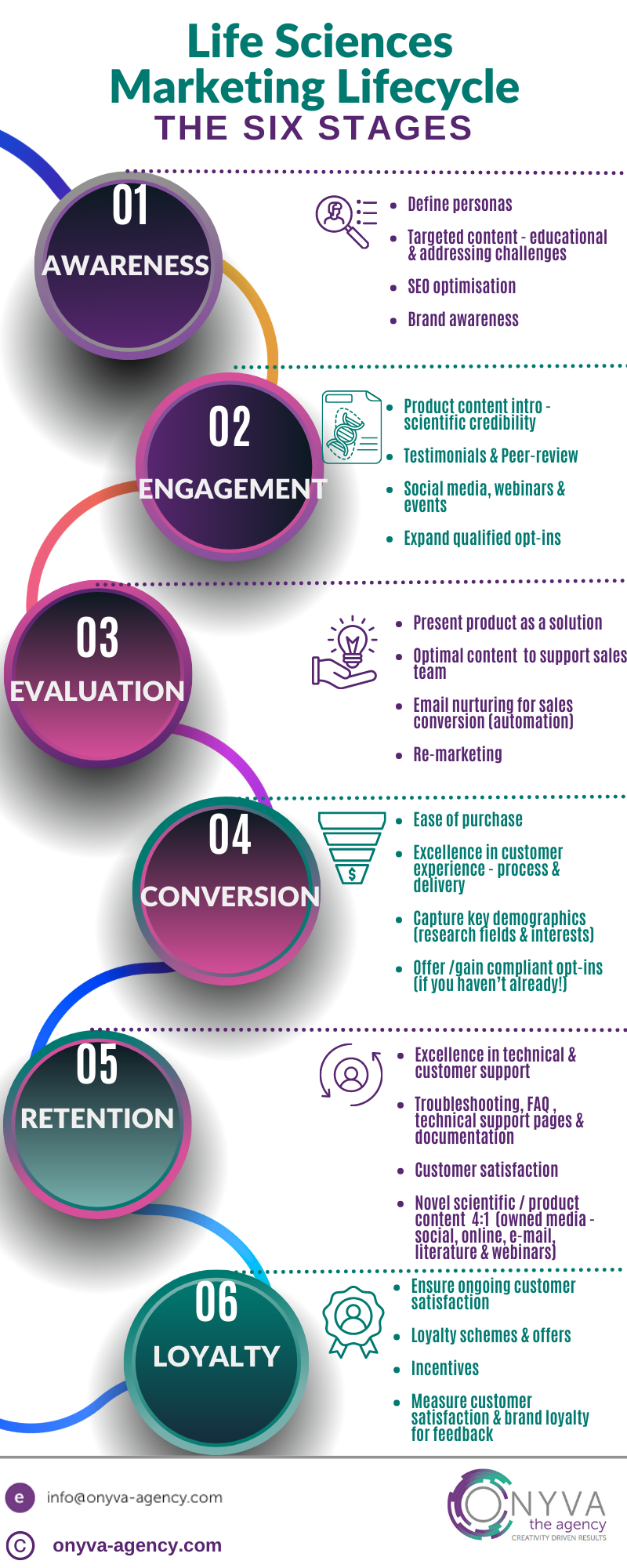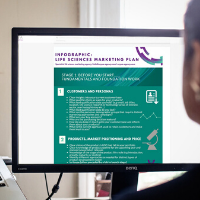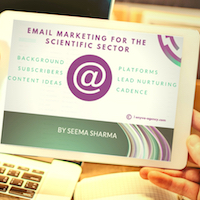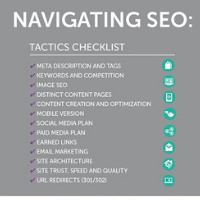
A guide to the marketing lifecycle for the life sciences
A key success factor for any business is being customer-centric — and the life sciences sector is no exception. In this article, we discuss how you can ensure your life sciences marketing strategy centres on your customer.
We cover all 6 stages of the marketing lifecycle. In addition, we discuss how to refine your plan and optimise tactics to ensure you include all aspects of the customer’s journey.
Indeed, although life sciences marketing is considered B2B, it has some unique characteristics that come as a result of the behavioural approaches of scientists, something we’ll touch on in this article.
Overview of the marketing lifecycle
The marketing lifecycle, (sometimes referred to as the marketing funnel), is distinct from the sales funnel. While the latter is a breakdown of the customer journey up to the point of purchase, the marketing lifecycle goes well beyond that. Critically, it also covers how to improve the customer purchasing experience using post-sale support, and importantly, methods to retain their custom. The latter include engendering loyalty and encouraging repeat sales. In addition, creating brand advocates amongst your customer base to amplify your marketing reach.
The length of the lifecycle can vary depending on the product or the customer. For example, the time to purchase for expensive research instrumentation will often be considerably longer that lower price point products, like lab consumables or reagents. Academic customers testing for a specific application on a research grant, will differ significantly in their interactions and requirements to say, a bulk purchase for a screening project or previously untested application in the Pharma industry. The latter project may require lab involvement and technical support for example, prior to conversion.
For convenience, we have segmented the marketing lifecycle into 6 different stages, each being unique in terms of customer needs and behaviours. Your duty as a marketer is to carefully analyze each step stage of the lifecycle and create a tailored marketing strategy that attracts new customers, retains current ones, and incentivises your advocates.
The stages of the marketing lifecycle
1. Awareness
At this point in time, you’re trying to get your brand onto the radar of your potential customers as a solution provider. If you haven’t already created your customer personas, this should be your first step and there are several sources of information you can use. One key approach is talking with the sales team. Use methods to reach out to your existing customers and understand what drives their purchasing decisions, what information they consume and through which channels. See our life science marketing plan article for more detail on personas.
It’s too early to speak about specific products yet, so try addressing any challenges your audience face instead. Alternatively, create specific educational material relevant to the scientific field in question. Always keep your target audience in mind, craft engaging content focusing on SEO and use the channels you identified above to disseminate it. Always keep your target audience and their challenges in mind. For example, if you’re targeting academics and the price point of your products is low enough for graduate students to buy, why not implement a new student starter pack? This is a great way to welcome them into their research life, while grabbing their attention and creating a positive rapport.
- Understand and define personas
- Craft appealing targeted content (e.g educational, addressing challenges NOT product content)
- SEO optimisation
- PPC campaigns
2. Engagement
At this stage, you want to start creating a desire for your product or service by differentiating from the competition. Your content should become more specific, but never self-centred. Always keep the problem first. Bear in mind that scientists are conservative and make evidence-led decisions, so make sure that your content is objective and accurate. They are also a lot more likely to trust their peers than commercial sources, so think about leveraging scientific publications in a white paper or case study. If your existing customers are allowed to talk about their work that involved your product or service, ask them to do so in a webinar or video Q&A and share enticing snippets in your social media. Tip: avoid “death by powerpoint” on your webinars and plan them more as a lively discussion. This not only makes it more engaging, but also allows you to repurpose your content as articles or podcasts.
- Product content with a focus on scientific credibility
- Testimonials & Peer-review publications
- Expand opt-in customer database
- Social media, webinars and events
3. Evaluation
You’ve attracted enough attention to your solution and it’s time to entice your customer into taking action. Make sure your sales team has all the materials they need to make a conversion possible. You wouldn’t build a website without carefully considering the design and User Experience (UX), so put the same effort into those sales decks to make sure they look professional and impressive. Use email nurturing to make sure that customer interest doesn’t fade away, and if your business model allows it, entice them with demos or free trials.
- Present your product
- Marketing content and collaterals to support sales team (clear product value proposition)
- Email nurturing for sales conversion (automation)
- Re-marketing
NB: Extended conversion criteria for some product sales – technical team input, bespoke use case testing and data. Examples include bulk purchases for specific or non-tested applications of reagents / biologics, or alternatively, high ticket research instrumentation items for specific applications.
4. Conversion
This stage is the point at which your customers engage directly with the sales team, or alternatively, use your e-commerce platform to make the decision to buy. This is a result of the trust they have in your brand in stages 1 and 2. Furthermore, the relevant product knowledge they have gleaned, at stage 3. After evaluation of the suitability of your product for their application, they have decided it is superior to competitor products (or unique on the market if competing products do not exist). Ensure that all key customer demographics are captured electronically at this stage, (if they haven’t been earlier in the lifecycle), alongside research areas and applications field. It is fine balance between capturing the relevant demographics, and ensuring you don’t ask too much that it makes the process arduous. Also, if they havent opted-in to date, present a double opt-in option again to receive content ( or follow the relevant GDPR compliance relevant in your region). This serves several purposes. You can send highly relevant marketing and product content to them in the future, which they are much more likely to engage with. In turn, you increase the chance that they hold your brand in mind for future product purchases – which links in to our next step below.
- Ease of purchase
- Excellence in customer experience – process and delivery
- Capture key demographics (including research areas – if you haven’t already!)
5. Retention
Retention is all about building long terms relations with your clients to ensure they keep coming back. For many life science companies that sell e.g. a product plus follow on support in the form of consumables or a software license, the attention that needs to be dedicated to this step is self-evident. In the case of other models, don’t make the mistake of forgetting your buyers and focussing all your energy into new customer acquisition. Existing customers should be made to feel valued and looked after. Make sure you have a comprehensive strategy to tackle customer support that involves FAQ and troubleshooting pages, Live Chat or Chatbot functions with well-thought out decision trees and of course a well-trained customer service team. Set targets on query answer times and vigorously measure customer satisfaction. The Net Promoter Score is a good metric to adopt for the latter, but also think what other factors are important for your business and incorporate them into your Customer Satisfaction Survey.
- Excellence in technical and customer support
- Troubleshooting, FAQ and technical support pages and documentation
- Customer satisfaction
- New targeted content for regular re-engagement (owned media – social, online, literature and webinars)
6. Loyalty
Loyalty is not simply about a satisfied buyer making repeat purchases. We mentioned above that scientists are peer-led, so this is the stage where you want your client talking to his peers about the positive experiences with your brand. Small gestures go a long way into establishing that positive rapport. Establish touch points with your customers post-purchase. A simple way is to ask about their satisfaction with your product or service. Alternative ideas, particularly relevant to the life sciences are to scan the scientific literature and send congratulatory messages to your clients when they publish. Another approach would be to offer incentives to your existing customers when they act as advocates. For example, when they act as referrers, agree to provide testimonials, or engage in your marketing activities such as webinars or case studies.
- Ongoing customer satisfaction
- Loyalty schemes and offers
- Incentivise
In Summary
The marketing lifecycle is a continuous process, and each stage is equally important for your company’s success. Here, we’ve outlined optimal marketing actions and activities to take at each stage of the marketing lifecycle for a B2B life sciences environment. There is often a focus on tactics to reach your customers and enable a sales conversion. However, due care and emphasis must also be given to retention by providing exemplary customer support, and giving incentives for ongoing loyalty. The latter stages are sometimes neglected, but are fundamental to the key goal of any successful business – a growing loyal and engaged customer base.





